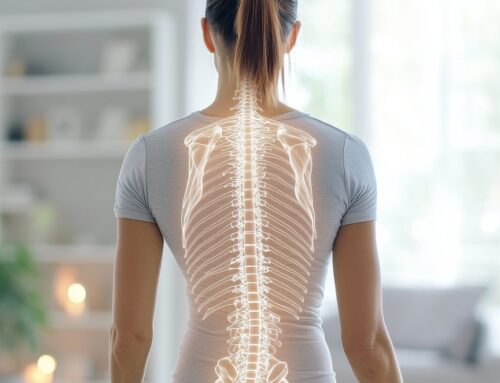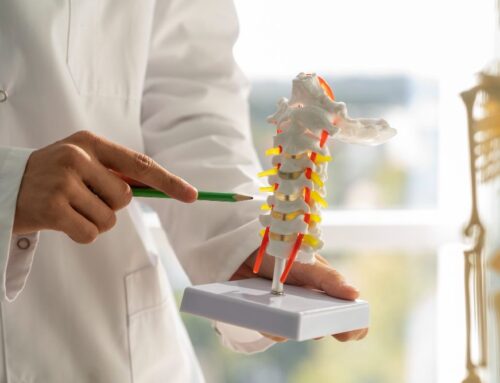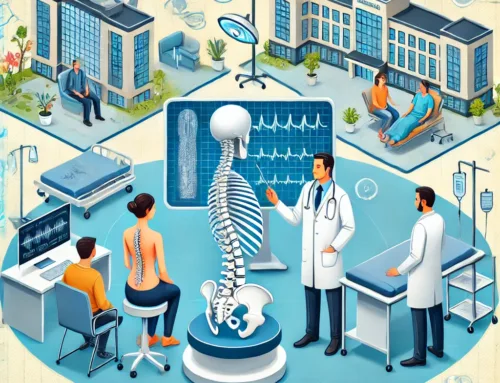Introduction
Scoliosis is a condition that affects the curvature of the spine, causing it to bend sideways. It can occur in people of all ages, but it most commonly develops during adolescence. Scoliosis can cause various signs and symptoms, which can vary depending on the severity of the condition. In this article, we will explore the signs and symptoms of scoliosis in detail, including how it can be diagnosed and treated.
What is Scoliosis?
Scoliosis is a musculoskeletal condition that causes an abnormal curvature of the spine. Instead of having a straight vertical alignment, the spine may have a sideways curve, resembling the shape of the letter “S” or “C.” The severity of scoliosis can range from mild to severe, and it can affect different parts of the spine, such as the upper back (thoracic scoliosis), the lower back (lumbar scoliosis), or both (thoracolumbar scoliosis).
Signs and Symptoms of Scoliosis
- Uneven Shoulders: One of the most common signs of scoliosis is uneven shoulders. If you notice that one shoulder appears to be higher than the other, or if your child’s shoulders are not level, it may be an indication of scoliosis. This asymmetry in the shoulders may become more apparent when the person is standing straight with their arms relaxed by their sides.
- Uneven Hips: Another sign of scoliosis is uneven hips. If one hip is higher than the other or if the waistline appears to be uneven, it may be a sign of scoliosis. This can cause an imbalance in the body’s alignment, leading to discomfort or pain.
- Abnormal Spinal Curve: Scoliosis can cause the spine to curve abnormally, leading to a visible deformity. When looking at a person’s back from behind, you may notice an “S” or “C” shape in the spine, which is not typically seen in a healthy spine. This abnormal curvature can also cause the ribcage to protrude on one side, leading to an uneven appearance of the back.
- Back Pain: Some people with scoliosis may experience back pain, although not everyone with scoliosis will have this symptom. The pain can vary in intensity, location, and frequency, and it may be more pronounced during activities that involve prolonged standing or sitting. In some cases, the pain may also be felt in the neck, shoulders, or hips.
- Muscle Imbalance: Scoliosis can cause muscle imbalances due to the uneven alignment of the spine. The muscles on one side of the spine may become overused and strained, while the muscles on the other side may become weak and underused. This can lead to muscle imbalances, which can cause discomfort, pain, or difficulty in performing certain movements or activities.
- Changes in Appearance: Scoliosis can also cause changes in a person’s appearance. As the spine curves abnormally, it can affect the alignment of the shoulders, waistline, and hips, leading to a noticeable change in the person’s overall body shape. This change in appearance can impact a person’s self-esteem and body image, especially during adolescence when body image is often a sensitive issue.
- Breathing Difficulties: In severe cases of scoliosis, the abnormal curvature of the spine can compress the lungs and restrict the chest cavity, leading to breathing difficulties. This can cause shortness of breath, reduced lung capacity, and difficulty in taking deep breaths. Breathing difficulties may become more noticeable during physical activities such as exercise or even during rest, and it can have a significant impact on a person’s quality of life.
- Reduced Range of Motion: Scoliosis can also affect a person’s range of motion, particularly in the spine. As the spine curves abnormally, it may limit the ability of the spine to move and twist freely. This reduced range of motion can impact a person’s flexibility and ability to perform certain activities that require spinal movement, such as bending, twisting, or reaching.
- Numbness or Tingling: In some cases, scoliosis can cause nerve compression due to the abnormal curvature of the spine. This can result in numbness or tingling sensations in the arms, legs, or other parts of the body. These sensations may be sporadic or persistent and may be more pronounced on one side of the body.
- Changes in Gait: Scoliosis can also affect a person’s gait, or the way they walk. The uneven alignment of the spine can lead to an imbalance in the body, causing changes in the person’s walking pattern. This may include a noticeable limp or an uneven stride, which can affect a person’s mobility and stability.
- Clothing Fit Issues: Another subtle sign of scoliosis can be issues with clothing fit. If you notice that your clothes fit differently on one side of your body compared to the other, such as one pant leg being shorter or tighter than the other, it may be a result of the asymmetry caused by scoliosis.
- Pain with Sitting or Standing for Long Periods: People with scoliosis may experience discomfort or pain when sitting or standing for prolonged periods of time. This is due to the abnormal curvature of the spine, which can put additional stress on the muscles, ligaments, and discs of the spine. The discomfort may be relieved when changing positions or lying down.
- Psychological Impact: Scoliosis can also have a psychological impact on individuals, particularly adolescents who are going through a period of body image development. The visible changes in appearance caused by scoliosis, such as uneven shoulders, hips, or a curved spine, can lead to self-consciousness, embarrassment, or even anxiety and depression.
- Diagnosis of Scoliosis Diagnosing scoliosis typically involves a physical examination by a healthcare professional, followed by imaging tests to confirm the presence and severity of the condition. During the physical examination, the healthcare professional may check for signs such as uneven shoulders, hips, or abnormal spinal curvature. They may also assess the range of motion, muscle strength, and neurological function.
If scoliosis is suspected, imaging tests such as X-rays, MRI, or CT scans may be ordered to obtain detailed images of the spine and confirm the presence of scoliosis. These tests can help determine the severity of the curvature, the location of the curve, and any associated complications such as nerve compression or spinal deformities.
- Treatment for Scoliosis The treatment for scoliosis depends on the severity of the condition, the age of the person, and other individual factors. Mild cases of scoliosis may not require any specific treatment and may only require regular monitoring and observation to check for any progression of the curvature. However, in moderate to severe cases, treatment options may include:
- Bracing: Bracing may be recommended for adolescents with moderate scoliosis to prevent further progression of the curvature. Braces are typically worn for several hours a day and can help stabilize the spine and prevent the curvature from worsening.
- Physical Therapy: Physical therapy may be recommended to strengthen the muscles around the spine and improve posture. Physical therapists can provide exercises and stretches tailored to an individual’s condition and help improve muscle imbalances, flexibility, and overall spinal health.
- Pain Management: Pain management techniques such as over-the-counter pain medications, heat or ice therapy, and gentle massage can be helpful in managing pain associated with scoliosis.
- Exercise: Specific exercises targeted at strengthening the core muscles, improving posture, and maintaining flexibility can be beneficial for individuals with scoliosis. These exercises may be recommended by a physical therapist or a healthcare professional and can be done at home or in a supervised setting.
- Observation and Monitoring: In some cases, especially for mild cases of scoliosis, the healthcare professional may recommend regular observation and monitoring to check for any progression of the curvature. This may involve regular check-ups and imaging tests to assess the changes in the spine over time.
- Surgical Intervention: In severe cases of scoliosis where the curvature is rapidly progressing or causing significant pain and discomfort, surgical intervention may be necessary. The type of surgery recommended will depend on the severity and location of the curvature, as well as the age and overall health of the individual. Surgical options may include spinal fusion, where the vertebrae are fused together to prevent further curvature, or the use of spinal implants to straighten and stabilize the spine.
It’s important to note that the treatment approach for scoliosis may vary depending on the individual case, and it’s always best to consult with a qualified healthcare professional for proper evaluation and personalized treatment recommendations.
Conclusion
Scoliosis is a common condition that affects the curvature of the spine and can have various signs and symptoms. It can range from mild to severe, and may be noticeable or subtle in appearance. Signs and symptoms of scoliosis may include uneven shoulders, hips, or waistline, asymmetrical posture, back pain, reduced range of motion, numbness or tingling, changes in gait, clothing fit issues, discomfort with sitting or standing, and psychological impact. Diagnosis of scoliosis involves a physical examination and imaging tests, and treatment options may include observation and monitoring, bracing, physical therapy, pain management, exercise, or surgical intervention depending on the severity of the condition. If you suspect you or someone you know may have scoliosis, it’s important to consult with a healthcare professional for proper evaluation and personalized treatment plan. Early detection and intervention can help manage the condition and improve quality of life for individuals with scoliosis.





Get Social